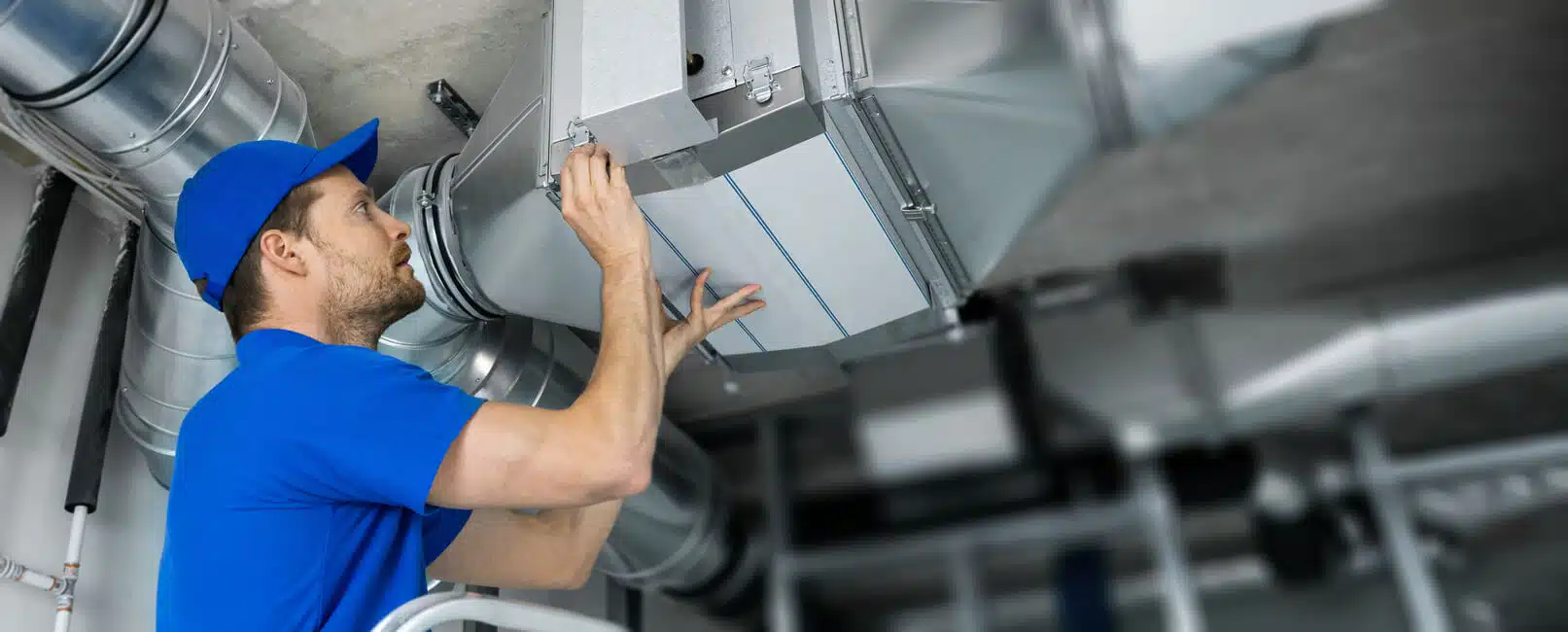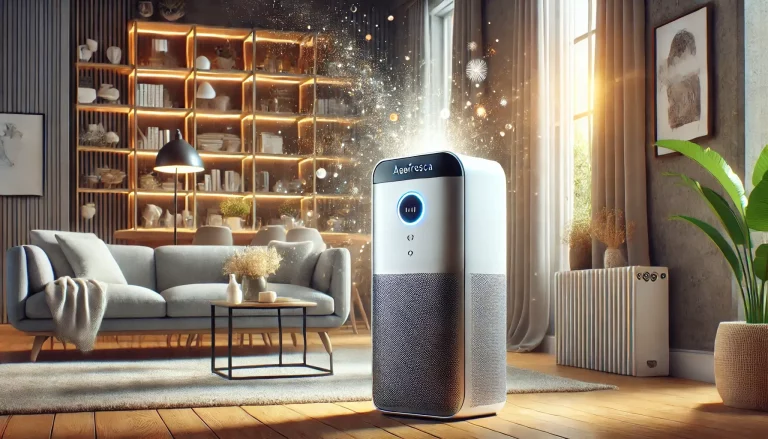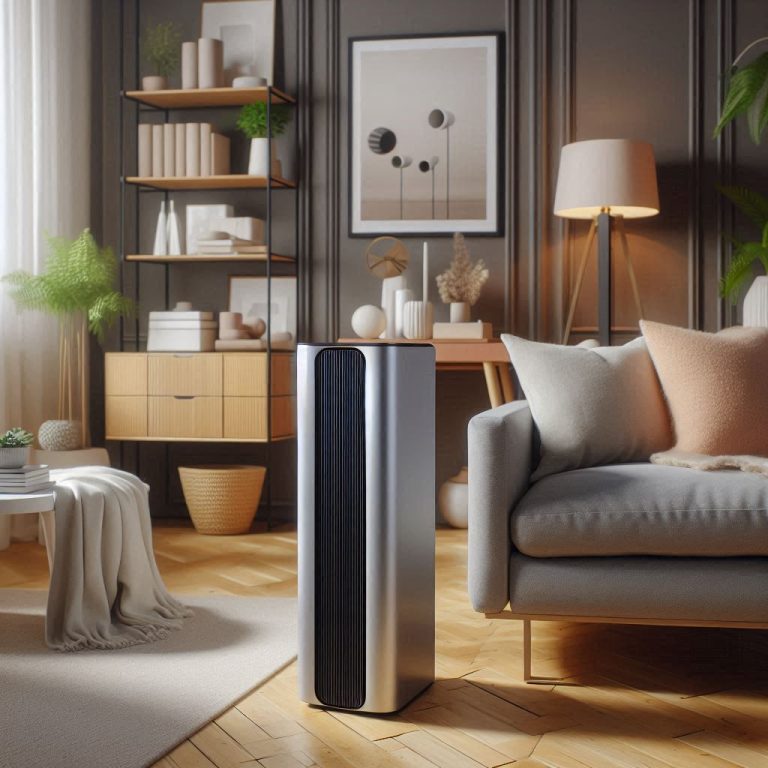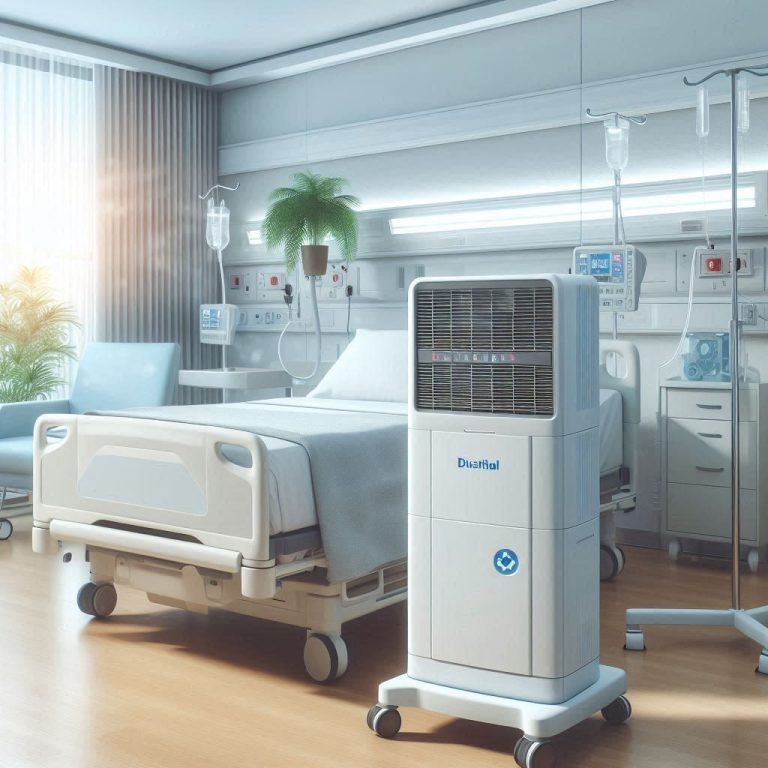Air Scrubbers for HVAC Systems: Improving Indoor Air Quality
Air scrubbers are essential components for enhancing indoor air quality in HVAC systems.
Whether you’re a homeowner seeking to improve your family’s health or a business aiming to provide a cleaner environment for your employees and customers, understanding air scrubbers can be a game-changer. This article will guide you through the essential aspects of air scrubbers, including how they work, their benefits, and how they compare to air purifiers.
In this article, you will learn:
- The fundamental differences between air scrubbers and air purifiers.
- How air scrubbers integrate and function within HVAC systems.
- The key benefits of using air scrubbers in your HVAC system.
Let’s dive into the world of air scrubbers and explore their impact on HVAC systems.
What are Air Scrubbers?
Air scrubbers are advanced devices designed to remove contaminants from the air, ensuring a cleaner and healthier indoor environment. They work by pulling air through a series of filters and purification processes, effectively capturing and neutralizing pollutants, allergens, and even some pathogens.
Different Types of Air Scrubbers
- Wet Air Scrubbers: These systems use a liquid solution, typically water, to trap and remove particles from the air. As the air passes through the scrubber, it encounters the liquid, which absorbs or neutralizes the contaminants. Wet scrubbers are particularly effective at handling gaseous pollutants and fine particulate matter.
- Dry Air Scrubbers: In contrast, dry scrubbers use a series of filters and absorbent materials to capture contaminants. These systems do not rely on liquids, making them easier to maintain and less prone to issues like mold growth. Dry scrubbers are effective for removing larger particles and certain chemical fumes.
Comparison with Other Air Purification Methods
While air scrubbers are highly effective, they are just one option among many for improving indoor air quality. Here’s how they compare with other common air purification methods:
- HEPA Filters: High-Efficiency Particulate Air (HEPA) filters are excellent at capturing large particles, such as dust and pollen. However, they may not be as effective at removing smaller pollutants or gases.
- UV Purifiers: Ultraviolet (UV) air purifiers use UV light to kill or neutralize pathogens like bacteria and viruses. They are effective in conjunction with other filtration systems but do not remove particulate matter.
- Ionizers: These devices release charged ions into the air, which attach to pollutants and cause them to fall out of the air. While they can reduce airborne particles, they may produce ozone, which can be harmful in high concentrations.
Air scrubbers stand out due to their comprehensive approach, addressing a wide range of contaminants and integrating seamlessly with HVAC systems to provide continuous air purification.
Air Scrubbers vs. Air Purifiers
Definition and Basic Function of Air Purifiers
Air purifiers are devices designed to clean the air by removing pollutants, allergens, and toxins. They typically use a combination of filters and, in some cases, additional purification technologies like UV light or ionization to improve air quality. Air purifiers are commonly used in residential settings to reduce allergens and improve overall air quality.
Key Differences in Technology and Application
- Technology:
- Air Scrubbers: These devices use a combination of filters and active purification processes, such as UV light or ionization, to remove a wide range of contaminants, including particles, gases, and pathogens. Air scrubbers are designed to integrate with HVAC systems, providing whole-house or building-wide air purification.
- Air Purifiers: Typically, air purifiers use HEPA filters, activated carbon filters, or a combination of both to trap particles and absorb gases. Some models also include UV light or ionization features. Air purifiers are usually standalone units intended for single-room use.
- Application:
- Air Scrubbers: Ideal for larger spaces or entire buildings, air scrubbers work continuously as part of an HVAC system, ensuring consistent air purification throughout the entire space. They are particularly beneficial in commercial or industrial settings where air quality is a critical concern.
- Air Purifiers: Best suited for smaller spaces, such as individual rooms or office spaces, air purifiers can be moved and used where needed. They are effective at targeting specific areas but do not provide comprehensive coverage like air scrubbers.
Pros and Cons of Each System
- Air Scrubbers:
- Pros:
- Comprehensive air purification for entire buildings.
- Effective against a wide range of contaminants, including particles, gases, and pathogens.
- Continuous operation as part of the HVAC system.
- Cons:
- Higher initial cost and installation complexity.
- Requires integration with existing HVAC systems, which may need professional assistance.
- Pros:
- Air Purifiers:
- Pros:
- Lower initial cost and easy setup.
- Portable and can be moved to different rooms as needed.
- Effective for targeted air quality improvement in specific areas.
- Cons:
- Limited coverage area, typically a single room.
- May not address all types of contaminants, especially gases and pathogens.
- Pros:
Understanding the differences between air scrubbers and air purifiers can help you make an informed decision about which system best meets your needs, whether it’s for your home, office, or larger commercial space.
How Air Scrubbers Work in HVAC Systems
Explanation of the Integration of Air Scrubbers with HVAC Systems
Air scrubbers are designed to work seamlessly with existing HVAC systems, enhancing their ability to clean and circulate air throughout a building. When integrated into an HVAC system, an air scrubber continuously treats the air as it moves through the ducts, ensuring that every room benefits from cleaner air.
Step-by-Step Process of Air Scrubbing in HVAC
- Air Intake: The HVAC system draws in air from the building’s interior. This air may contain various contaminants, such as dust, pollen, mold spores, and volatile organic compounds (VOCs).
- Pre-Filtration: Before the air reaches the air scrubber, it typically passes through a pre-filter in the HVAC system. This filter captures larger particles, such as dust and pet dander, to prevent them from clogging the air scrubber.
- Air Scrubbing:
- The air scrubber employs a combination of technologies to clean the air. These may include HEPA filters for particle removal, activated carbon filters for gas and odor absorption, and UV light or ionization for neutralizing pathogens.
- As the air passes through the air scrubber, contaminants are captured or neutralized. HEPA filters trap particles as small as 0.3 microns, while activated carbon filters absorb gases and odors.
- UV light and ionization technologies break down the molecular structure of pathogens, rendering them harmless.
- Clean Air Distribution: Once the air is scrubbed, it is reintroduced into the HVAC system, where it is heated or cooled as needed. The cleaned air is then distributed throughout the building via the ductwork, ensuring a consistent supply of purified air in every room.
Benefits of Using Air Scrubbers in HVAC Systems
- Comprehensive Air Quality Improvement: By integrating with the HVAC system, air scrubbers provide continuous air purification, ensuring that all rooms benefit from cleaner air.
- Health Benefits: Improved air quality can lead to significant health benefits, especially for individuals with allergies, asthma, or other respiratory conditions. Removing pollutants, allergens, and pathogens from the air can reduce symptoms and promote overall well-being.
- Energy Efficiency: Air scrubbers can enhance the efficiency of HVAC systems by keeping ducts and components cleaner. This can lead to reduced energy consumption and lower utility bills.
- Longevity and Maintenance: Clean air reduces the wear and tear on HVAC components, potentially extending the lifespan of the system. Regular air scrubbing can also reduce the frequency of maintenance and filter replacements.
Understanding how air scrubbers work within HVAC systems highlights their importance in maintaining a healthy indoor environment and optimizing HVAC performance.
Benefits of Air Scrubbers in HVAC Systems
Improved Air Quality and Health Benefits
One of the most significant advantages of air scrubbers in HVAC systems is the substantial improvement in indoor air quality. By removing pollutants, allergens, and pathogens, air scrubbers create a cleaner and healthier environment. This is particularly beneficial for individuals with respiratory conditions such as asthma or allergies, as cleaner air can alleviate symptoms and reduce the likelihood of health issues caused by poor air quality.
Energy Efficiency and Cost Savings
Air scrubbers not only enhance air quality but also improve the overall efficiency of HVAC systems. By keeping the air ducts and HVAC components cleaner, air scrubbers help the system operate more efficiently. Cleaner components require less energy to function, which can lead to noticeable reductions in energy consumption and, consequently, lower utility bills. Over time, the energy savings can offset the initial investment in air scrubbers.
Longevity and Maintenance of HVAC Systems
Another significant benefit of integrating air scrubbers into HVAC systems is the positive impact on the system’s longevity and maintenance. Clean air ducts and components experience less wear and tear, which can extend the lifespan of the HVAC system. This means fewer repairs and replacements, saving money and reducing the inconvenience of HVAC downtime. Additionally, air scrubbers can help reduce the frequency of filter changes and other routine maintenance tasks, further lowering maintenance costs and efforts.
By investing in air scrubbers for your HVAC system, you not only ensure a healthier living or working environment but also enjoy financial savings and extended system life. These benefits make air scrubbers a valuable addition to any HVAC setup.
Choosing the Right Air Scrubber for Your HVAC System
Key Factors to Consider
When selecting an air scrubber for your HVAC system, several factors should guide your decision to ensure optimal performance and suitability:
- Size and Capacity: The air scrubber must be appropriately sized for your HVAC system and the space it serves. Consider the square footage of your home or building and choose a unit that can handle the volume of air effectively.
- Type of Contaminants: Identify the primary contaminants you need to address. For example, if you are dealing with specific allergens, mold, or chemical fumes, ensure the air scrubber is equipped with the necessary filtration and purification technologies.
- Technology and Features: Different air scrubbers come with various technologies, such as HEPA filters, activated carbon filters, UV light, or ionization. Evaluate these features based on your needs and preferences.
- Maintenance Requirements: Consider the maintenance needs of the air scrubber, including filter replacement frequency and overall upkeep. Opt for a model that fits your maintenance capacity and budget.
Popular Brands and Models
Several reputable brands offer high-quality air scrubbers for HVAC systems. Here are a few to consider:
- Aerus Air Scrubber Plus: Known for its ActivePure technology, which uses UV light and a catalytic process to reduce contaminants in the air and on surfaces.
- Reme Halo by RGF: This model uses ionized hydro-peroxide output to reduce airborne and surface contaminants, including bacteria, mold, and viruses.
- Honeywell F300E: A whole-house electronic air cleaner that uses a combination of filters and ionization to capture particles and improve air quality.
- Triad Aer: Offers advanced filtration and purification technologies, including UV light and ionization, for comprehensive air cleaning.
Professional Installation vs. DIY Options
Deciding whether to install an air scrubber yourself or hire a professional depends on several factors:
- Professional Installation: Hiring a professional ensures the air scrubber is correctly integrated with your HVAC system, maximizing its efficiency and effectiveness. This option is recommended if you lack technical expertise or if the installation process is complex.
- DIY Options: Some air scrubbers are designed for easy installation, allowing you to set them up without professional help. If you are comfortable with basic HVAC maintenance tasks and the air scrubber comes with clear instructions, DIY installation can save you money.
Choosing the right air scrubber involves careful consideration of your specific needs, the features and capabilities of the unit, and whether professional installation is necessary. By making an informed decision, you can ensure that your HVAC system effectively improves indoor air quality.
Conclusion
Air scrubbers are powerful tools for enhancing the performance and effectiveness of HVAC systems.
Throughout this article, we’ve explored the essential aspects of air scrubbers, including their functionality, how they integrate with HVAC systems, and the benefits they provide. By understanding these key points, you can make informed decisions about improving your indoor air quality.
In this article, you have learned:
- The fundamental differences between air scrubbers and air purifiers.
- How air scrubbers integrate and function within HVAC systems.
- The key benefits of using air scrubbers in your HVAC system.
If you’re looking to further enhance your indoor air quality, consider exploring the latest advancements in HVAC technologies or consulting with a professional to assess your specific needs. Investing in the right air purification solutions can significantly improve your living or working environment, promoting health and well-being.
Thank you for reading, and take the next step towards cleaner, healthier air today!
Are You Happy Knowing That Every Other System Only Captures 10% Of Airborne Particles?
Breathe Clean, Live Better! Upgrade to our Advanced Air Purifying System today and eliminate 100% of ultrafine particles down to 1 nanometer in one pass. Don’t compromise on your family’s and employee’s health. Act now and transform your indoor air quality!







